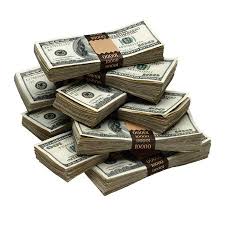Jewellery (also spelled jewelry, see spelling differences) is a personal ornament, such as a necklace, ring, or bracelet, made from gemstones, precious metals or other materials.
The word jewellery is derived from the word jewel, which was anglicised from the Old French "jouel" circa the 13th century.[1] Further tracing leads back to the Latin word "jocale", meaning plaything. Jewellery is one of the oldest forms of body adornment; recently found 100,000 year-old beads made from Nassarius shells are thought to be the oldest known jewellery.[2]
Although during earlier times jewellery was created for practical uses such as wealth, storage and pinning clothes together, in recent times it has been used almost exclusively for decoration. The first pieces of jewellery were made from natural materials, such as bone, animal teeth, shell, wood and carved stone. Jewellery was often made for people of high importance to show their status and, in many cases, they were buried with it.
Jewellery has been made to adorn nearly every body part, from hairpins to toe rings and many more types of jewellery. While high-quality is made with gemstones and precious metals, there is also a growing demand for art jewellery where design and creativity is prized above material value. In addition, there is the less-costly costume jewellery, made from less-valuable materials and mass-produced. New variations include wire sculpture (wrap) jewellery, using anything from base metal wire with rock tumbled stone to precious metals and precious gemstones.
Form and function
Jewellery has been used for a number of reasons:
Currency, wealth display and storage,
Functional use (such as clasps, pins and buckles)
Symbolism (to show membership or status)
Protection (in the form of amulets and magical wards),[3]
Artistic display
Most cultures have at some point had a practice of keeping large amounts of wealth stored in the form of jewellery. Numerous cultures move wedding dowries in the form of jewellery, or create jewellery as a means to store or display coins. Alternatively, jewellery has been used as a currency or trade good; an example being the use of slave beads.[citation needed]
Many items of jewellery, such as brooches and buckles originated as purely functional items, but evolved into decorative items as their functional requirement diminished.[4]
Jewellery can also be symbolic of group membership, as in the case of the Christian crucifix or Jewish Star of David, or of status, as in the case of chains of office, or the Western practice of married people wearing a wedding ring.
Wearing of amulets and devotional medals to provide protection or ward off evil is common in some cultures; these may take the form of symbols (such as the ankh), stones, plants, animals, body parts (such as the Khamsa), or glyphs (such as stylized versions of the Throne Verse in Islamic art).[5]
Although artistic display has clearly been a function of jewellery from the very beginning, the other roles described above tended to take primacy.[citation needed] It was only in the late 19th century, with the work of such masters as Peter Carl Fabergé and René Lalique, that art began to take primacy over function and wealth.[citation needed] This trend has continued into modern times, expanded upon by artists such as Robert Lee Morris and Ed Levin.
Read more ... ( click here )
From Wikipedia, the free encyclopedia






